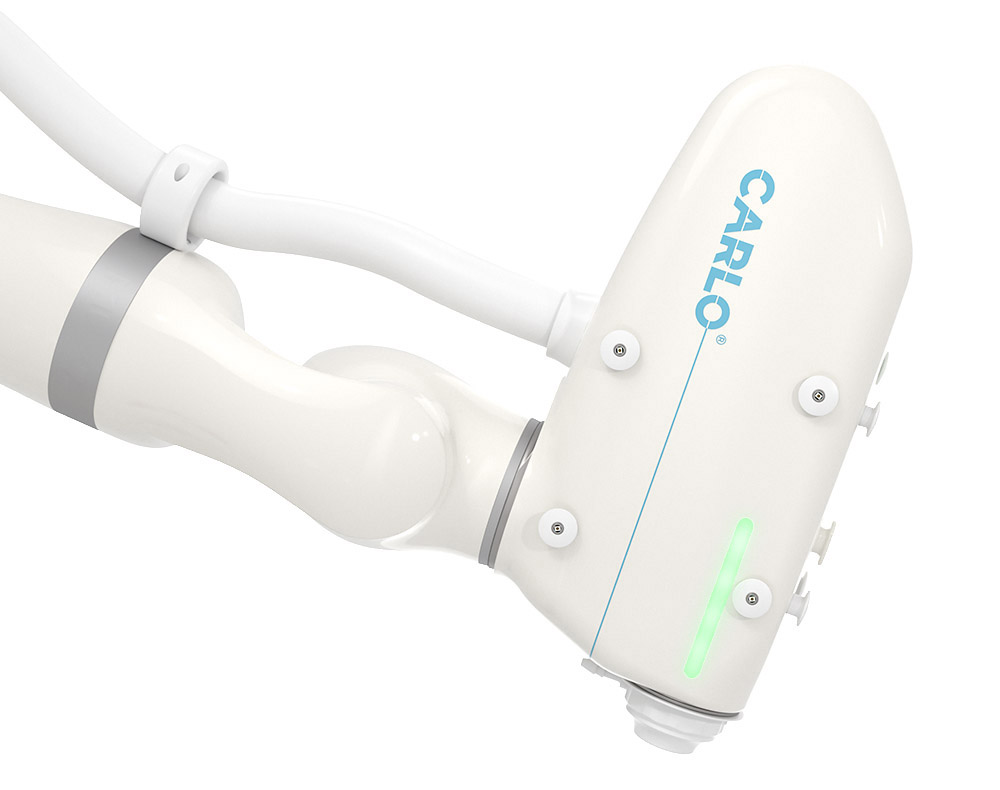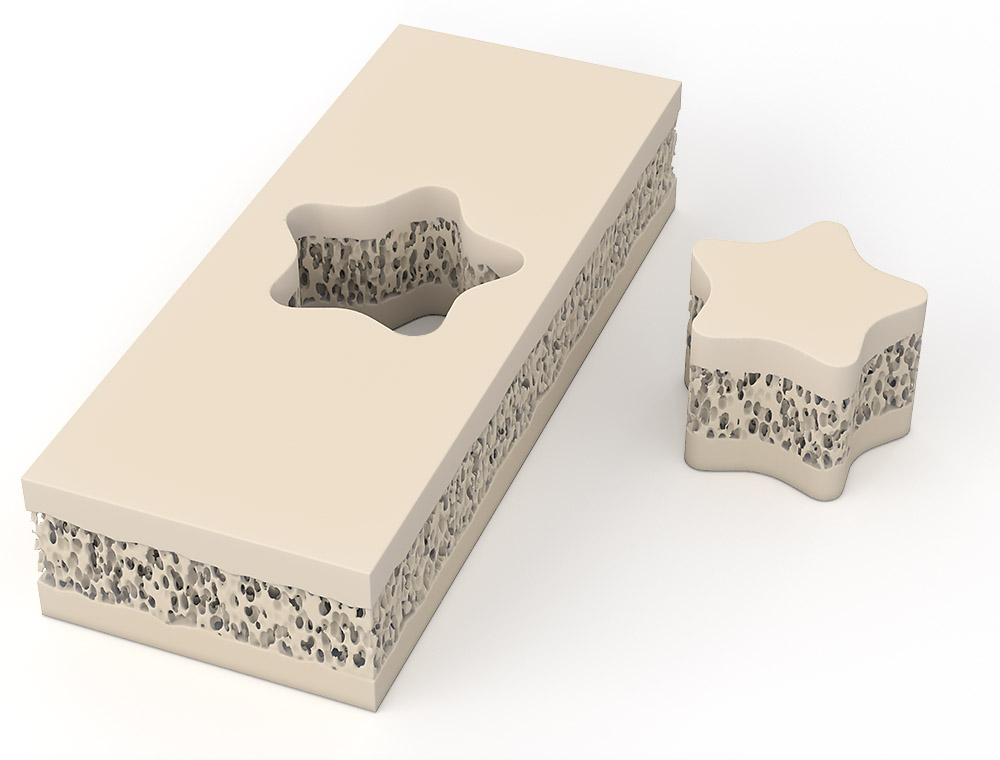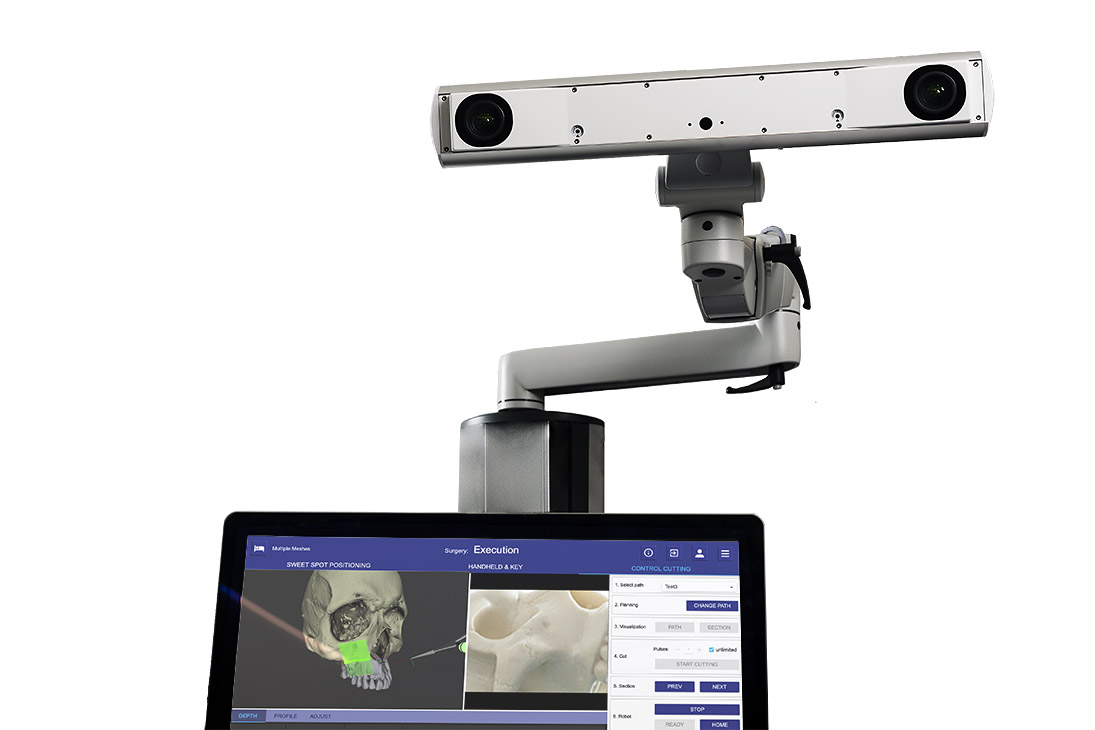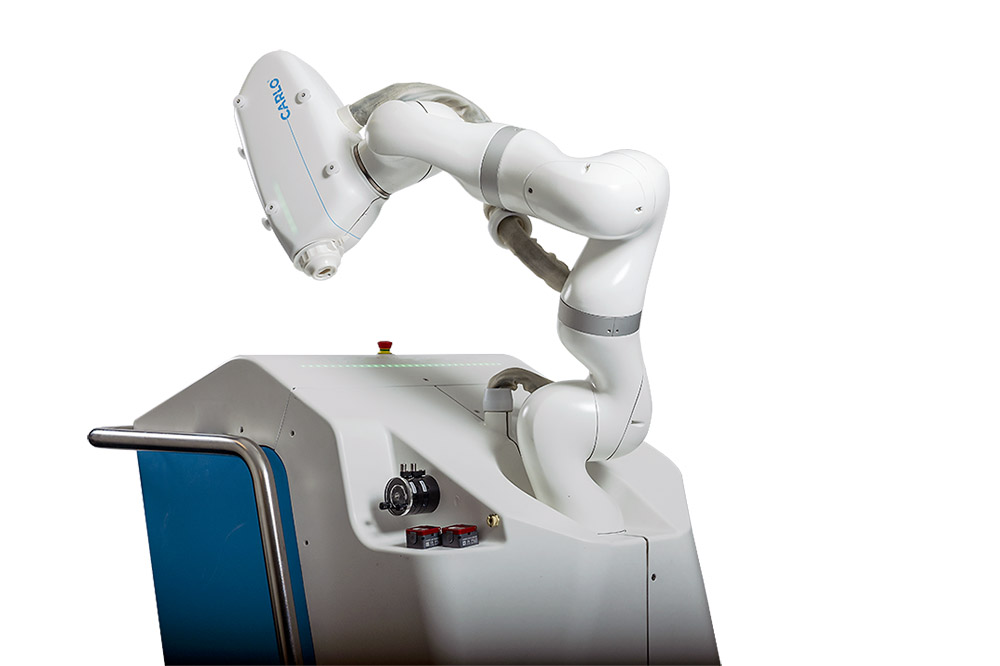
Autonomous
CARLO® is the first safe autonomous surgical robot. When precision matters or multiple cuts need to be carried out, the seamless execution of a preoperative plan saves OR time. Cut surfaces can be matched with outstanding precision which eliminates cumbersome (re-)modelling of grafts and improves the outcome of osteosyntheses.



